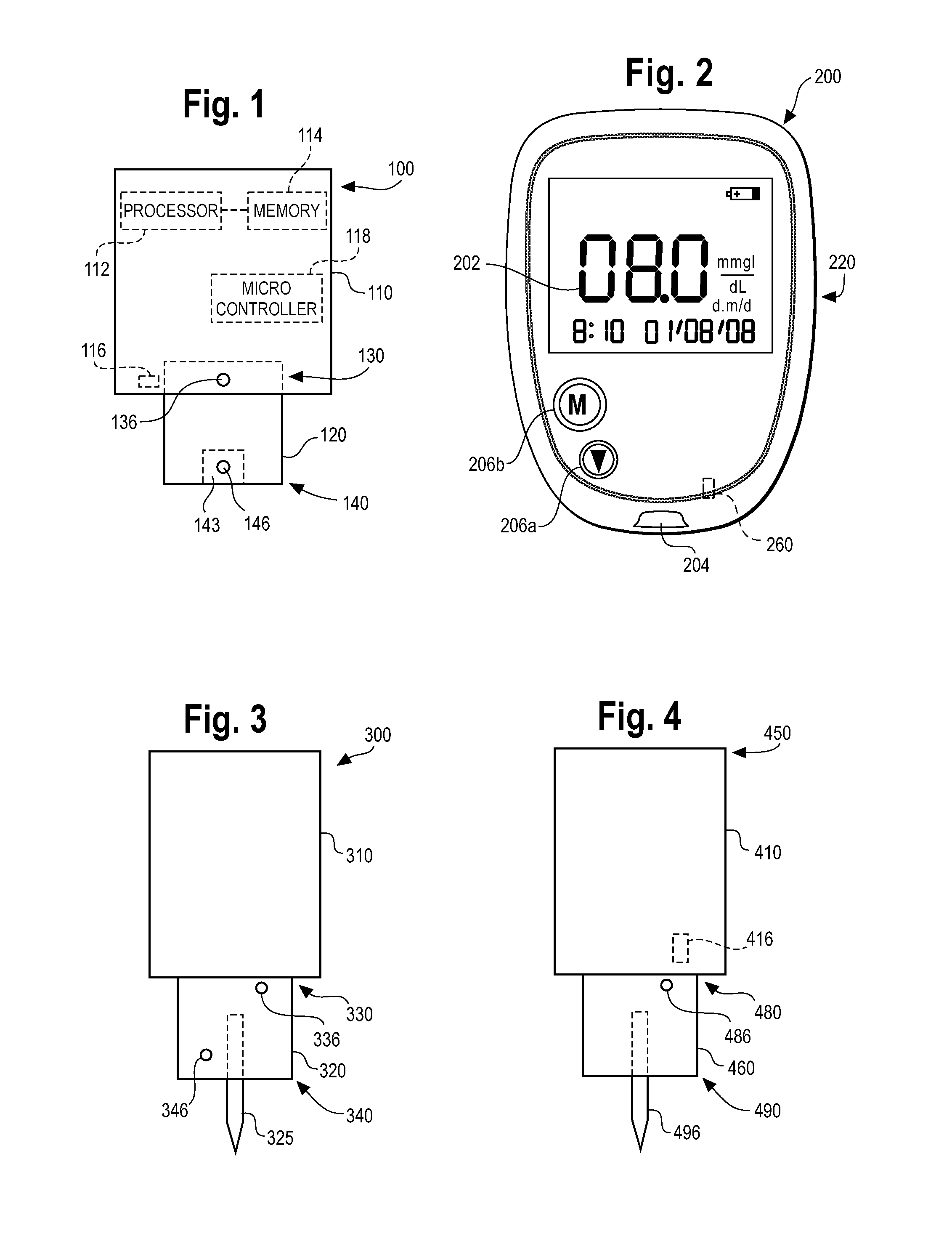System and Apparatus for Determining Temperatures in a Fluid Analyte System
a fluid analyte and temperature technology, applied in the field of fluid analyte systems, can solve the problems of system slow response to environmental changes, inaccurate blood glucose concentration calculation, and inability to accurately measure blood glucos
- Summary
- Abstract
- Description
- Claims
- Application Information
AI Technical Summary
Benefits of technology
Problems solved by technology
Method used
Image
Examples
Embodiment Construction
[0049]Generally, a test sensor is employed to collect a blood sample, and a blood glucose meter measures a reaction between the glucose in the sample with a reagent on the test sensor to calculate a corresponding blood glucose concentration. The temperature of the reagent affects the reaction between the glucose and the reagent. As such, the temperature of the reagent also affects the blood glucose concentration calculated by the blood glucose meter. The temperature of the reagent is assumed to be substantially equal to the ambient temperature in or surrounding the meter. Temperature sensing elements in the blood glucose meter can provide an estimate of the ambient temperature, which can then be used in the calculation of the blood glucose concentration. However, the blood glucose meter includes various heat-generating elements that can cause the temperature measured by the temperature sensing elements in the meter to differ from the ambient temperature. When the temperature measure...
PUM
| Property | Measurement | Unit |
|---|---|---|
| Temperature | aaaaa | aaaaa |
| Concentration | aaaaa | aaaaa |
| Electrical resistance | aaaaa | aaaaa |
Abstract
Description
Claims
Application Information
 Login to View More
Login to View More - R&D
- Intellectual Property
- Life Sciences
- Materials
- Tech Scout
- Unparalleled Data Quality
- Higher Quality Content
- 60% Fewer Hallucinations
Browse by: Latest US Patents, China's latest patents, Technical Efficacy Thesaurus, Application Domain, Technology Topic, Popular Technical Reports.
© 2025 PatSnap. All rights reserved.Legal|Privacy policy|Modern Slavery Act Transparency Statement|Sitemap|About US| Contact US: help@patsnap.com



